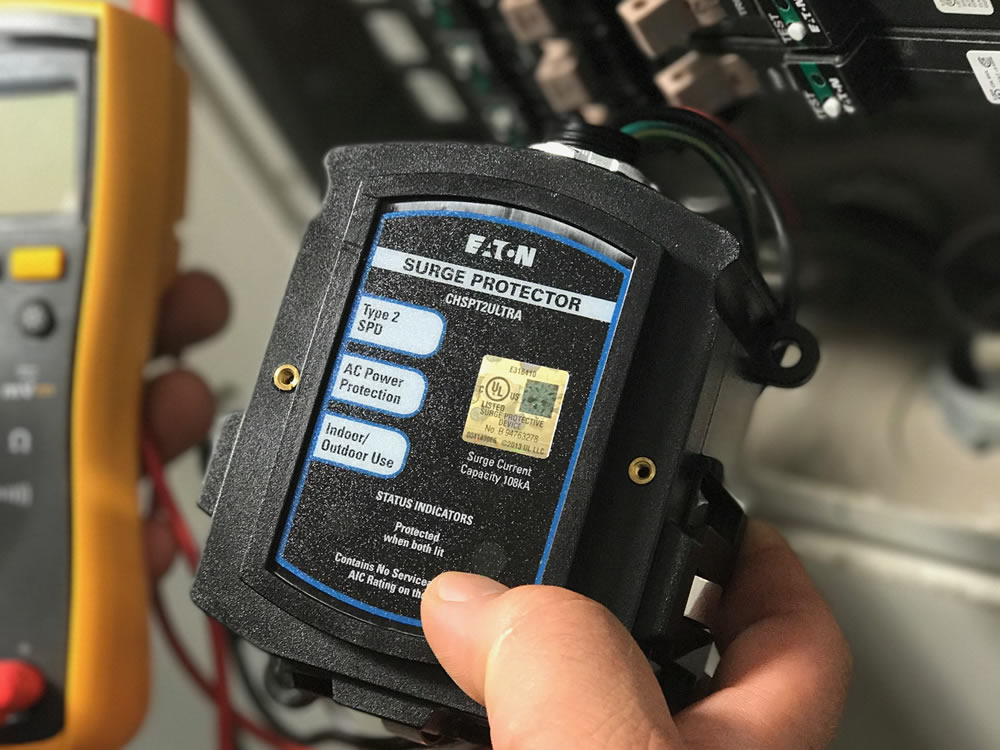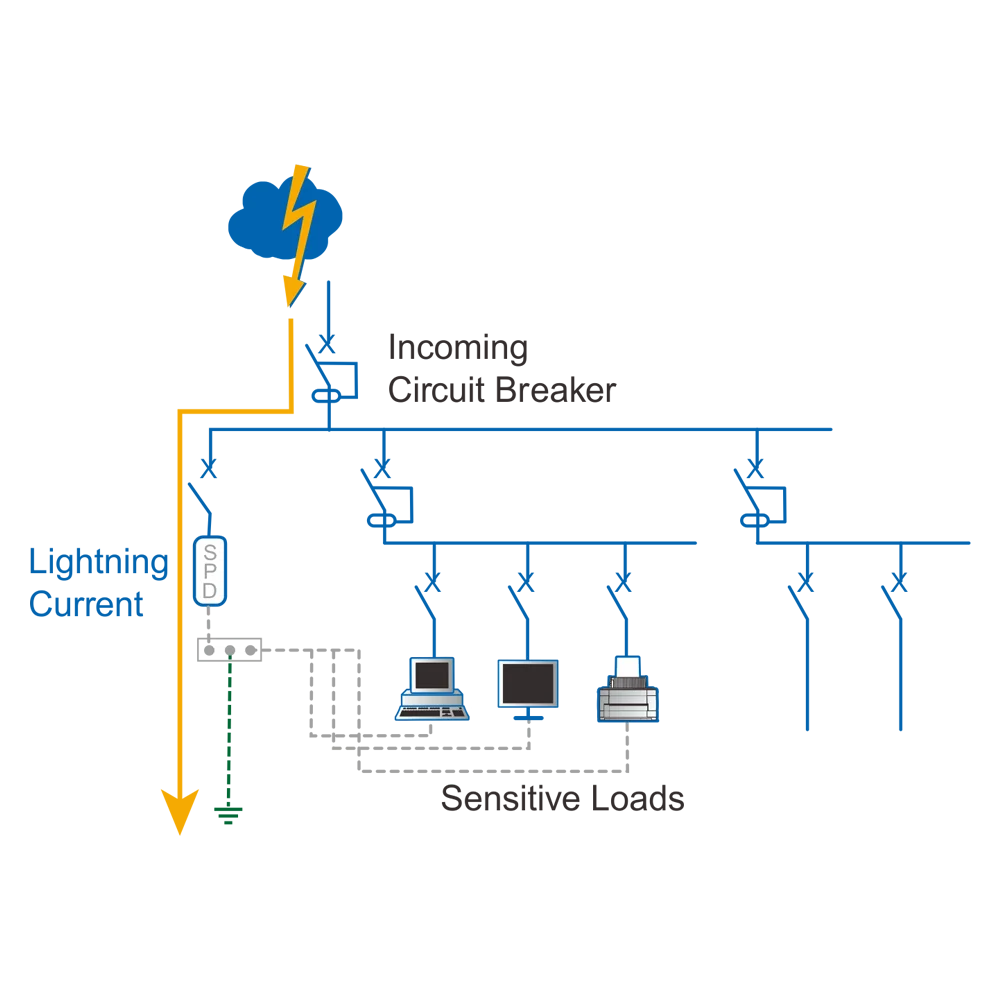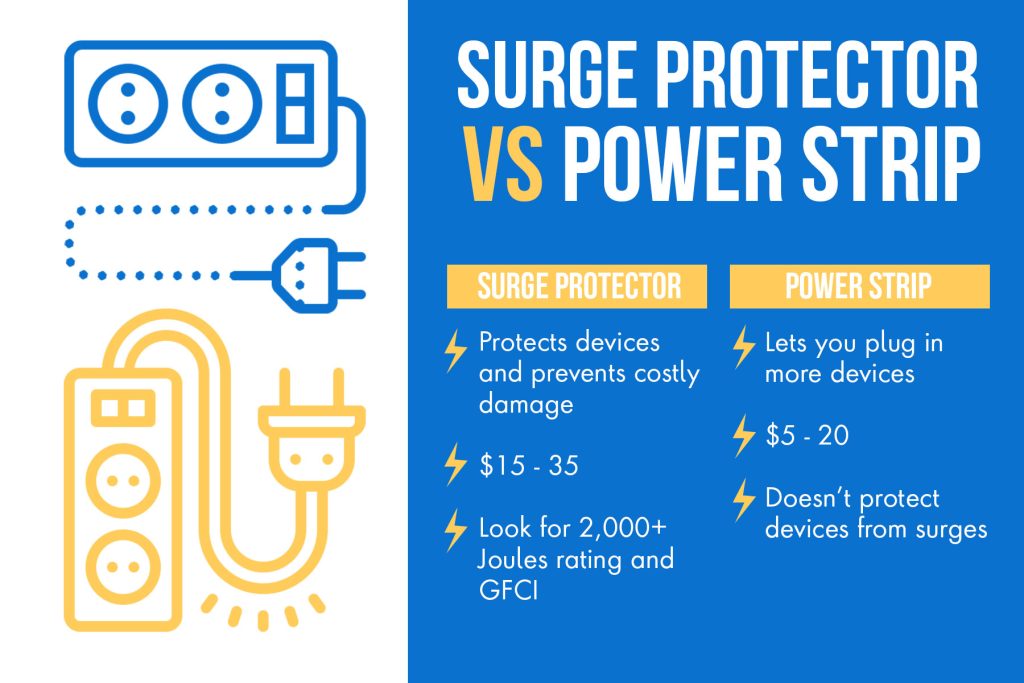What You Need to Know About Surge Protection
In an era dominated by electronic devices, the importance of protecting our gadgets from unforeseen electrical threats cannot be overstated. Power surges, caused by lightning strikes, power outages, or other electrical anomalies, pose a constant risk to the well-being of our valuable electronics. In this in-depth guide from Capricorn Electric, we will explore the intricacies of surge protectors, from understanding their functionality to selecting the right one for your specific needs.
What is a Surge Protector?
A surge protector, also known as a surge suppressor or surge diverter, is a device designed to protect electronic devices and appliances from voltage spikes or surges in electrical power. These voltage spikes, often caused by lightning strikes, power outages, or sudden changes in the electrical grid, can potentially damage or destroy sensitive electronic equipment.
The primary function of a surge protector is to regulate the voltage supplied to an electric device by blocking or shorting to ground any voltages above a safe threshold. Surge protectors work by diverting excess electrical energy away from connected devices, preventing them from being exposed to potentially harmful levels of voltage.
Here are some key features and components of surge protectors:
Metal Oxide Varistors (MOVs): Most surge protectors use Metal Oxide Varistors, which are semiconductor devices that can conduct electricity when the voltage exceeds a certain level. MOVs act as a sacrificial component, absorbing excess voltage and diverting it away from connected devices.
Gas Discharge Arrestors (GDAs): Some surge protectors incorporate Gas Discharge Arrestors, which are gas-filled tubes that become conductive when the voltage surpasses a specific threshold. Like MOVs, GDAs help to redirect excessive voltage away from sensitive electronics.
Joule Rating: Surge protectors are often rated in joules, representing the amount of energy they can absorb before they become ineffective. Higher joule ratings indicate a surge protector’s ability to handle larger surges and provide better protection.
Clamping Voltage: This is the voltage level at which the surge protector begins to divert excess voltage. Lower clamping voltages indicate better protection, as they ensure that connected devices are exposed to as little overvoltage as possible.
Response Time: A surge protector’s response time is the duration it takes to begin diverting excess voltage. Lower response times are generally better, as they minimize the exposure of connected devices to potentially damaging surges.
It’s important to note that while surge protectors provide valuable protection against many types of electrical disturbances, they are not foolproof. Extremely high-voltage events, such as a direct lightning strike, may overwhelm even the most robust surge protectors. As a result, additional protective measures, such as unplugging devices during severe storms, can further enhance electronic safety.
How Do Surge Protectors Work?
Surge protectors work by detecting and diverting excess voltage away from electronic devices, safeguarding them from potential damage caused by power surges.
The surge protector is typically connected to a power source, and the devices to be protected are plugged into the surge protector. When a voltage spike occurs, the protective components inside the surge protector respond swiftly, providing a path of lower resistance for the excess energy to travel. This redirection prevents the voltage spike from reaching and potentially damaging the connected devices.
It’s important to note that surge protectors do have limitations. They may wear out over time, especially if exposed to frequent surges. Additionally, extremely high-energy events, such as a direct lightning strike, may exceed the capacity of the surge protector.
To enhance protection, it’s recommended to replace surge protectors periodically and to consider additional protective measures, such as unplugging devices during severe storms.
Why Do You Need Surge Protection?
Surge protection is essential for several reasons, as it plays a crucial role in safeguarding electronic devices and appliances from the potential damage caused by power surges. Here are key reasons why surge protection is necessary:
Voltage Spikes Can Occur Anytime
Power surges can happen at any time due to various reasons, including lightning strikes, electrical grid fluctuations, or sudden changes in power demands. Without surge protection, your electronic devices are vulnerable to the unpredictable nature of these events.
Preventing Damage to Sensitive Electronics
Many modern electronic devices and appliances contain sensitive components that can be easily damaged by voltage spikes. Surge protection acts as a barrier, diverting excess voltage away from these sensitive components and preventing potential harm.
Extending the Lifespan of Devices
Continuous exposure to power surges can shorten the lifespan of electronic devices. Surge protectors help ensure that your expensive electronics, such as computers, televisions, and home appliances, have a longer operational life by minimizing the wear and tear caused by voltage irregularities.
Protecting Data and Information
Electronic devices often store valuable data and information. Power surges can corrupt or erase this data, leading to data loss. Surge protectors provide a defense against such scenarios, preserving your digital information and preventing the need for costly data recovery measures.
Avoiding Financial Loss
The cost of replacing or repairing damaged electronics can be significant. Surge protection is a relatively small investment compared to the potential financial loss incurred when valuable devices are rendered unusable due to power surges.
Maintaining Home Safety
Power surges can pose a safety hazard by causing electrical fires. Surge protectors not only protect your electronic devices but also contribute to overall home safety by reducing the risk of electrical fires caused by voltage spikes.
Insurance for Unpredictable Events
Natural disasters, such as lightning storms, can result in powerful electrical surges. Surge protectors act as a form of insurance, providing a defense against these unpredictable events and minimizing the risk of damage to your electronic equipment.
Comprehensive Protection for All Devices
Surge protectors offer a versatile solution, protecting a wide range of devices, from computers and TVs to kitchen appliances and charging devices. This comprehensive protection ensures that all your electronic investments are covered.
What Devices Need A Surge Protector?
Various electronic devices benefit from surge protection, especially those with sensitive components that can be easily damaged by voltage spikes. Here’s a list of devices that commonly require surge protection:
Computers and Laptops
Desktop computers, laptops, and associated peripherals (monitors, printers, etc.) are sensitive to voltage fluctuations. Surge protectors help prevent damage to internal components and ensure the reliability of your computing devices.
Televisions and Home Entertainment Systems
High-definition TVs, audiovisual receivers, gaming consoles, and other home entertainment systems are susceptible to damage from power surges. Surge protectors provide a protective barrier, preserving the quality and functionality of these devices.
Refrigerators and Freezers
Large appliances like refrigerators and freezers contain electronic components, such as control boards and sensors, which can be affected by power surges. Surge protection helps prevent potential malfunctions and extends the lifespan of these essential household appliances.
Washing Machines and Dryers
Modern washing machines and dryers often include electronic controls. Surge protectors shield these appliances from voltage spikes, reducing the risk of electrical malfunctions and increasing their longevity.
Dishwashers
Dishwashers with electronic controls can benefit from surge protection to prevent damage to control panels and other sensitive components.
Microwaves
Microwaves, especially those with electronic displays and control panels, can be vulnerable to power surges. Surge protectors ensure the continued functionality of these kitchen appliances.
Smartphones and Tablets
While these devices are often charged using USB adapters, surge protectors with USB ports can provide an additional layer of protection for smartphones and tablets, safeguarding them from voltage spikes during charging.
Home Office Equipment
Devices such as printers, scanners, fax machines, and routers are crucial for home offices. Surge protectors help maintain the stability of these devices, reducing the risk of interruptions due to electrical issues.
Gaming Consoles and Accessories
Gaming consoles, controllers, and other gaming accessories can be sensitive to power fluctuations. Surge protection is essential to prevent damage to these devices, ensuring a seamless gaming experience.
Networking Equipment
Modems, routers, and other networking equipment are vital for maintaining internet connectivity. Surge protectors help shield these devices from potential damage caused by power surges.
Charging Stations
With the proliferation of smart devices, charging stations for phones, tablets, and other gadgets can benefit from surge protection, safeguarding both the charging station and the connected devices.
Home Automation Systems
Smart home devices, including thermostats, security cameras, and smart doorbells, often have electronic components. Surge protectors contribute to the overall stability and reliability of these interconnected systems.
Surge Protector vs. Power Strip: Know the Differences
Surge protectors and power strips may look similar, but they serve different purposes and offer varying levels of protection. Understanding the differences between them is crucial for ensuring the safety of your electronic devices. Here’s a breakdown of the distinctions:
Purpose and Function:
Surge Protector: The primary purpose of a surge protector is to safeguard electronic devices from voltage spikes or surges. Surge protectors contain internal components, such as Metal Oxide Varistors (MOVs) or Gas Discharge Arrestors (GDAs), which detect and divert excess voltage away from connected devices, preventing potential damage.
Power Strip: A power strip, on the other hand, is essentially an extension cord with multiple outlets. While it provides additional sockets for plugging in devices, it does not offer protection against voltage spikes. It simply extends the reach of a single power outlet.
Protective Components:
Surge Protector: Contains protective components like MOVs or GDAs that actively respond to voltage irregularities and divert excess energy. These components absorb or redirect the extra voltage, preventing it from reaching connected devices.
Power Strip: Lacks specific protective components for managing voltage spikes. It acts as a passive device, providing additional outlets without actively protecting connected devices from power surges.
Voltage Spike Response:
Surge Protector: Responds to voltage spikes by diverting the excess energy to the ground or absorbing it within the protective components. This response helps shield connected devices from potential damage.
Power Strip: Does not actively respond to voltage spikes. It provides no defense against sudden increases in voltage, leaving connected devices vulnerable to potential harm.
Indicator Lights:
Surge Protector: Often equipped with indicator lights to signal whether the protective components are still functional. If the surge protector has taken a significant surge, rendering it less effective, these lights may indicate the need for replacement.
Power Strip: Typically lacks indicator lights related to surge protection because it does not provide surge protection.
Joule Rating:
Surge Protector: Usually rated in joules, representing the amount of energy it can absorb before its protective components become ineffective. Higher joule ratings indicate a surge protector’s ability to handle larger surges.
Power Strip: Does not have a joule rating since it lacks surge protection capabilities.
Cost:
Surge Protector: Generally more expensive than a basic power strip due to the inclusion of protective components and surge mitigation technology.
Power Strip: Typically more cost-effective, as it lacks the internal components for surge protection.
Picking the Right Type of Surge Protector for Your Needs
Selecting the right type of surge protector is crucial to ensure optimal protection for your electronic devices. Here are key considerations and factors to guide you in picking the right surge protector for your specific needs:
Determine Your Power Needs
Assess the total power requirements of the devices you plan to connect to the surge protector. Ensure that the surge protector can handle the combined wattage without overloading.
Understand Joule Rating
Joules represent the amount of energy a surge protector can absorb before its protective components become ineffective. Higher joule ratings indicate better protection. Choose a surge protector with a joule rating that aligns with the potential risks in your area, considering factors like lightning frequency and power grid stability.
Consider Clamping Voltage
Clamping voltage is the level at which the surge protector begins to divert excess voltage. Lower clamping voltages offer better protection by limiting the amount of voltage that reaches your devices. Aim for a surge protector with a low clamping voltage for enhanced safety.
Response Time Matters
Response time indicates how quickly the surge protector reacts to a voltage spike. Faster response times are preferable, as they minimize the duration of exposure to potentially damaging surges. Look for surge protectors with response times measured in nanoseconds.
Types of Surge Protectors
Point-of-Use Surge Protectors: These are the most common type and are designed for individual devices or small clusters of electronics. Examples include surge-protected power strips and wall outlet surge protectors.
Whole-House Surge Protectors: Installed at the main electrical panel, these protect all the devices connected to your home’s electrical system. They are more effective against larger surges and are suitable for areas with frequent lightning activity.
Consider Connected Equipment Warranty
Some surge protectors come with a connected equipment warranty, providing coverage for devices connected to the surge protector in case they are damaged due to a surge. Check the warranty terms and conditions for added peace of mind.
Number and Type of Outlets
Ensure that the surge protector has adequate outlets to accommodate your devices.
Additionally, consider whether you need specific features such as USB ports, spaced-out outlets for larger plugs, or coaxial and telephone jacks for comprehensive protection.
Indicator Lights and Audible Alarms
Look for surge protectors with indicator lights to signal whether the protective components are functioning properly. Some models also include audible alarms to alert you if the surge protector has taken a significant surge and requires replacement.
Review Customer Reviews and Ratings
Research customer reviews and ratings for surge protectors you are considering. Real-world experiences from other users can provide valuable insights into the reliability and performance of a particular model.
Replace Aging Surge Protectors
Surge protectors have a finite lifespan, and their effectiveness can diminish over time. If your surge protector has taken a significant surge or is several years old, consider replacing it to ensure continued protection.
By carefully considering these factors, you can choose a surge protector that aligns with your specific needs and provides reliable protection for your electronic devices against potential power surges.
Surge Protectors Will Not Always Work
While surge protectors are highly effective in safeguarding electronic devices against voltage spikes, it’s essential to recognize that they are not infallible, and there are certain scenarios where they may not provide absolute protection.
Here are some factors and limitations to keep in mind:
Extreme Voltage Surges
In cases of exceptionally high voltage surges, such as a direct lightning strike, surge protectors may not be able to handle the immense amount of energy involved. While surge protectors are designed to divert and absorb surges, extremely powerful events may overwhelm their protective capabilities.
Aging and Wear
Surge protectors have a finite lifespan, and their ability to provide effective protection can diminish over time. The internal components, such as Metal Oxide Varistors (MOVs), may wear out, reducing the surge protector’s effectiveness. It’s recommended to replace surge protectors periodically, especially after they’ve experienced significant surges.
Continuous Low-Level Surges
Some surge protectors are not designed to handle continuous low-level surges over an extended period. Over time, these continuous, lower-level surges may contribute to wear and reduce the surge protector’s efficacy. Whole-house surge protectors may be more suitable for handling prolonged exposure to surges.
Unknown Quality or Counterfeit Products
Substandard or counterfeit surge protectors may not provide the level of protection claimed by reputable brands. It’s crucial to purchase surge protectors from reputable manufacturers and ensure they meet safety and quality standards.
Incorrect Usage
Using a surge protector beyond its specified load capacity can compromise its effectiveness. Overloading the surge protector with too many devices can lead to overheating and potential failure. Always adhere to the manufacturer’s guidelines regarding the maximum load capacity.
Unprotected Circuits
If certain devices are not connected to the surge protector but directly plugged into an unprotected outlet, they remain vulnerable to power surges. Ensure that all sensitive electronics are connected to surge protectors for comprehensive coverage.
Failure to Replace After a Surge
Surge protectors are sacrificial devices designed to absorb energy during a surge. After experiencing a significant surge, some surge protectors may become less effective. It’s important to replace surge protectors after they’ve sacrificed themselves to protect connected devices.
Unplanned Power Outages
Surge protectors typically require a continuous power source to function optimally. In the event of a sudden power outage, surge protectors may not protect during that time. Unplugging sensitive electronics during storms or power outages can offer an additional layer of defense.
While surge protectors have limitations, they remain a crucial component in a comprehensive strategy to protect electronic devices. Combining surge protectors with other protective measures, such as unplugging devices during severe storms, using whole-house surge protectors, and practicing safe electrical habits, enhances overall protection against potential electrical hazards.
Conclusion
In conclusion, surge protectors stand as indispensable guardians of our electronic investments. By comprehending their mechanisms, recognizing the devices that require protection, and selecting the right surge protector for specific needs, homeowners can create a robust defense against the unpredictable nature of power surges.
Invest in the safety of your electronics, and let surge protectors be the unsung heroes, preserving the functionality and longevity of your valuable devices.


